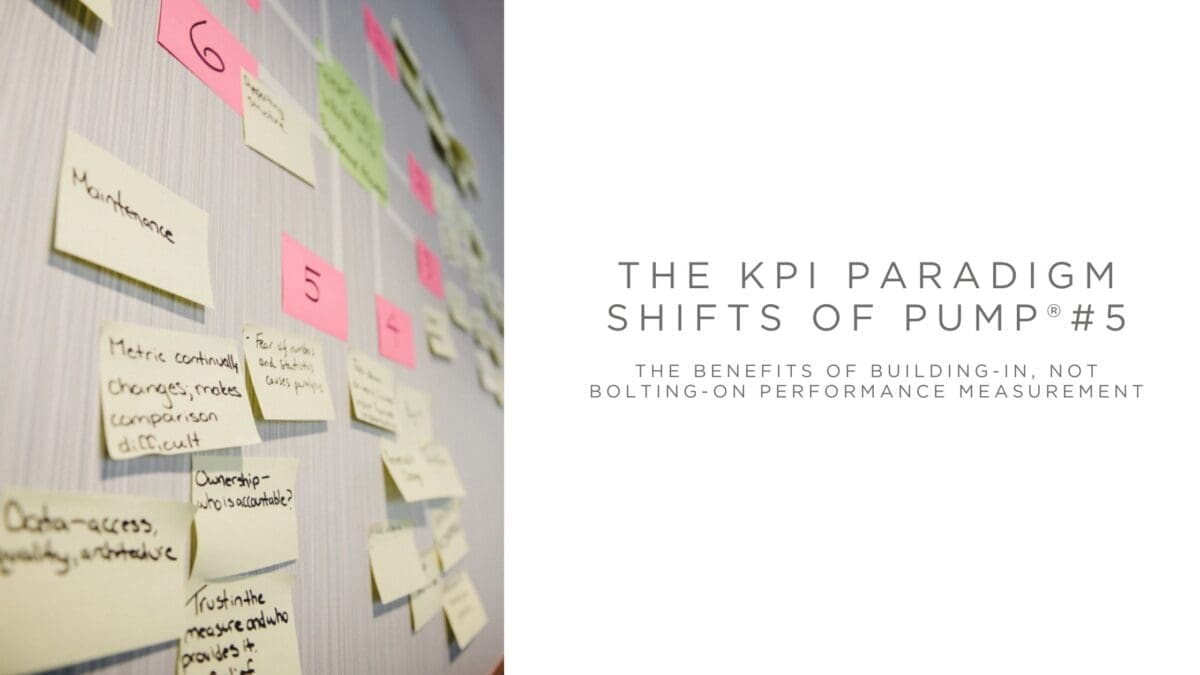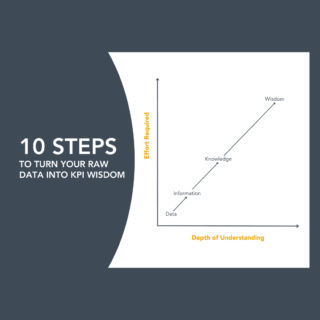If you have read KPI Paradigm Shifts of PuMP #1, #2, #3, and #4, skip this intro and scroll down to today’s article. If you haven’t, here is the link that introduces our 5-part blog series, inspired by the Paper published by the United Nations Economic Commission for Europe, about how they used PuMP to measure the value of official statistics and the paradigm shifts they experienced. (Full series context here)
If you want the future of your organization to be better than today, be prepared to invest. The toughest part of this investment will likely not be the cold hard cash, but the change needed from leadership, from employees and from your systems.
When it comes to your systems for strategy achievement, we often rely on monthly or quarterly reports to tell us if and by how much our organization is changing.
Consider for a moment: how useful is this report? How much do you trust the content?
A truly useful and usable report that aids in decision-making is the end-result of 6 corporate processes, working symbiotically. Yet, in too many cases, reporting can be disconnected from some or all of them, thus reducing the report’s trust-ability and leaders’ ability to lead strategy execution effectively.
Do you recognize these 6 processes that work in tandem for strategy execution success?
- Strategy formulation: a process that should help the organization articulate what matters most to create, change, or improve in the context of the organization’s purpose and future vision.
- Strategy implementation: a process that should help align the organization’s resources to close its strategic performance gaps.
- Performance measurement: a process that should help the organization design and use quantified evidence that provides statistically-sound feedback on whether the execution efforts are closing the strategic performance gaps.
- Root cause analysis and continuous improvement: an approach to identifying constraints in the way work gets done and removing them for longer-lasting improvements.
- Creating a performance measurement culture: this process should help people form positive beliefs about measurement and performance that inspires teams to learn and improve.
- Performance reporting: a communication method that helps leaders know what needs their attention now and to make evidence-based decisions about what to do next to drive improvement.
The result of these processes working together, is information that decision-makers can trust and easily use. The Keystone process (out of the six) that enables all the others to deliver more value, is the process for designing and using more meaningful KPIs. But, to get this value, your KPI approach needs to be integrated with the other strategic processes, not trying to function in isolation.
Why does a “built-in” approach to measurement matter?
What we want is an approach to measurement that is consistent across the organization, and that can empower all these other processes to perform in a more meaningful way, thus delivering high value to decision-makers throughout their strategy conversations. Building-in performance measurement across your strategy achievement processes needs to drive improvement within the other 5 processes, and not feel like just another “thing that is supposed to be done”.
How does the “bolt-on” approach to measurement fail organizations?
A bolt-on approach stays external from the other processes, and thus the resulting measures from this approach usually have low value, are trivial, or irrelevant, and are rarely used. Being external from the other five processes means it has no ability to improve the other tandem processes, making performance reports of very low relevance to strategy execution. For example, leaders want to know if the actions being taken are having any impact, but without proper performance measurement all they know is if the projects are on-time or on-budget and other low strategic metrics like this one.
Wondering if your organization is stuck in simply “bolting-on” a measurement approach vs working to build one in?
Look for these symptoms…
Symptom #1: People purchase, google, or curate ready‐made KPIs and then place them into the strategic plan and performance dashboards.
You will recognize this symptom when people take short cuts, producing measures that rarely stick because they fail to (1) build buy‐in with the teams that are supposed to use them and (2) focus the organization on the measures that really matter (as they are usually neither relevant nor meaningful).
Symptom #2: Organizations provide KPI training but fail to provide oversight of the implementation of the changes that were learned.
You will recognize this symptom when no one is responsible for coordinating and supporting the implementation of the KPI learnings within their organization. As a result, training is considered more important than the application of it, and the value is lost because it fails to produce the change intended from the new techniques learned.
Symptom #3: The organization lacks a documented approach to how they will drive performance improvement.
You will recognize this symptom when there is an absence of a shared approach to how strategic performance management happens in the organization. If people don’t have a clear idea of how the strategy was designed and how it is cascaded, they will also lack the understanding of when and where to measure their own performance improvements, (resulting in lost time, money, and energy).
Ready to shift the paradigm from bolting-on measurement to building measurement into your already existing strategic processes?
Use these Questions to Trigger Conversations and Inspire Change
Question 1: How, exactly, does our organization (1) set strategy? (2) monitor the improvement of our strategy over time? (3) check the measures we monitor to gauge the impact of the actions we have taken and learn from it?
- What is the relationship between our strategic measures and our leadership’s learning culture?
- Do we stop doing an action and test other solutions if we see that our action is not having the intended impact?
Question 2: What are the steps in our current approach to measurement?
- Have we documented the steps by using a flow-chart, or a documented business-procedure, or are we using a specific methodology like PuMP® that has already documented the steps for us?
- If we haven’t documented our steps, could we?
Question 3: Are our strategic priorities paired with a meaningful measure (evidence) and a well‐designed target before we decide on actions?
- If not, why not?
- If the answer is ‘no’ then our measurement approach is “bolted-on” and not built into the organization’s strategy management processes. What are we going to do to change?
Paradigm shifts don’t happen overnight!
A good place to start is to consider:
- Are people under-estimating the rigor and capabilities needed to develop a consistent performance measurement approach?
- Are your most strategic organizational processes and systems (as described above) not deliberately documented, making it hard to work out where measurement should fit and integrate successfully?
Learn more about this series
Upcoming in this series:
- August Webcast: watch for announcements and join our always informative and interactive webcast co-hosted by Stacey Barr and Louise Watson
Did you miss the previous blogs in this series?



